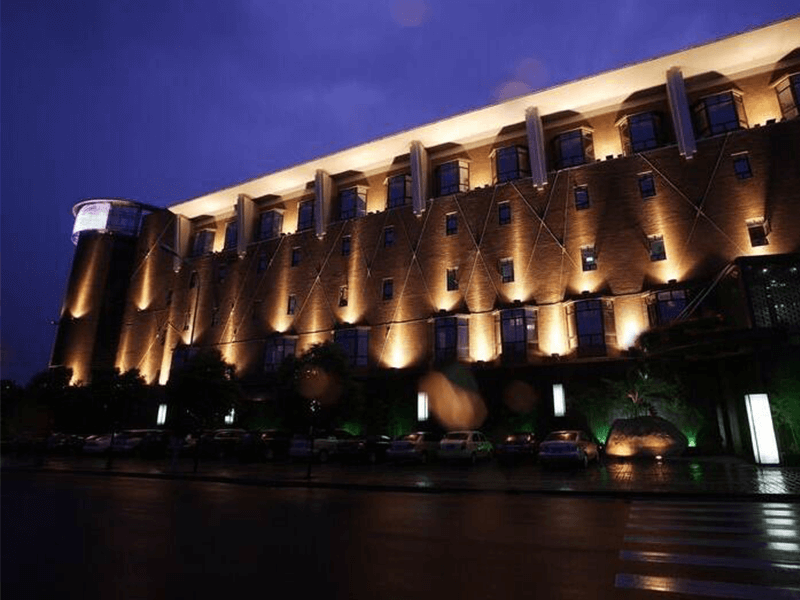Indirect lighting suits various applications thanks to its soft and ambient illumination. Here are some expanded details on the suitable applications for indirect lighting:
1. Residential Spaces:
Indirect lighting is used in residential settings to create a warm and inviting atmosphere. It can be applied in living rooms, bedrooms, and dining areas to enhance the overall comfort and coziness of the space. The soft and diffuse glow of indirect lighting contributes to a relaxed and intimate ambiance, making it ideal for areas where people gather for relaxation or socialization.
2. Hospitality Industry:
Indirect lighting plays a significant role in the hospitality industry, including hotels, resorts, restaurants, and bars. It is often used in public spaces such as lobbies, lounges, and corridors to create a welcoming and visually appealing environment. Indirect lighting can evoke a sense of luxury, elegance, and tranquility, enhancing the guest experience and setting the desired mood for different areas within the establishment.
3. Retail Environments:
Indirect lighting is widely used in retail settings to highlight merchandise, create visual interest, and establish a pleasant shopping experience. It is often employed in display areas, showcases, or window displays to draw attention to specific products and create an inviting atmosphere. Indirect lighting techniques can be used to accentuate textures, colors, and details, enhancing the visual impact of the merchandise and stimulating customer interest.
4. Galleries and Museums:
Indirect lighting is a popular choice for art galleries and museums due to its ability to provide gentle and uniform illumination without causing damage to delicate artworks. The soft and diffused light helps minimize glare and reflections, allowing visitors to appreciate the painting properly. Indirect lighting can create a balanced and visually appealing exhibition space that enhances the viewing experience.
5. Corporate and Office Spaces:
Indirect lighting is increasingly used in corporate and office environments to create a comfortable and productive workspace. It helps to reduce glare and create an even distribution of light, minimizing eye strain and enhancing visual comfort for employees. Indirect lighting can be applied in open office areas, meeting rooms, and collaborative spaces to create a pleasant and conducive working environment.
6. Restaurants and Cafes:
Indirect lighting is widely used in restaurants and cafes to establish a cozy and inviting atmosphere for patrons. It creates a pleasant dining experience by providing a soft, warm glow that complements the establishment’s overall ambiance and interior design. Indirect lighting can be strategically placed to highlight seating areas, bar counters, or decorative elements, enhancing the broad visual appeal and creating an enjoyable dining environment.
7. Spa and Wellness Centers:
Indirect lighting is well-suited for spa and wellness centers, where creating a tranquil and soothing atmosphere is essential. It helps to promote relaxation and rejuvenation by providing a soft and gentle illumination that complements the calming environment. Indirect lighting can be incorporated into treatment rooms, relaxation areas, or corridors to create a serene ambiance, supporting the overall wellness experience for visitors.
8. Theaters and Performance Spaces:
Indirect lighting is commonly used in theaters and performance spaces to create a dramatic and atmospheric environment. It can be employed to enhance stage lighting effects, set the mood for different scenes, or highlight architectural elements of the venue. Indirect lighting techniques such as cove lighting or uplighting can create a dynamic and visually captivating atmosphere that enhances the theatrical experience.
9. Conference and Event Venues:
Indirect lighting is often utilized in conference rooms, banquet halls, and event venues to create a sophisticated and elegant ambiance. It helps to set the desired mood for different events, whether a formal conference, a wedding reception, or a social gathering. Indirect lighting fixtures can be strategically positioned to create a warm and welcoming atmosphere, contributing to a memorable and enjoyable experience for attendees.
10. Retail Showrooms and Car Dealerships:
Indirect lighting is frequently used in retail showrooms and car dealerships to showcase products and create a visually engaging environment. It can be applied to highlight specific areas, such as product displays or car models, with soft and flattering illumination. Indirect lighting helps to draw attention to critical features, textures, and colors, enhancing the overall presentation and making the products more visually appealing to customers.
These are just a few examples of the wide range of applications where indirect lighting is suitable. The versatility of indirect lighting allows it to be tailored to specific design goals, whether to create a relaxed ambiance, highlight architectural features, or provide comfortable illumination for tasks. By considering the unique requirements of each space, indirect lighting can be effectively implemented to enhance the functionality and aesthetics of various environments.
Whether it’s for creating an intimate dining experience, promoting relaxation in wellness centers, setting the stage for performances, or enhancing retail presentations, indirect lighting offers a flexible and effective solution for creating the desired atmosphere and visual impact.
